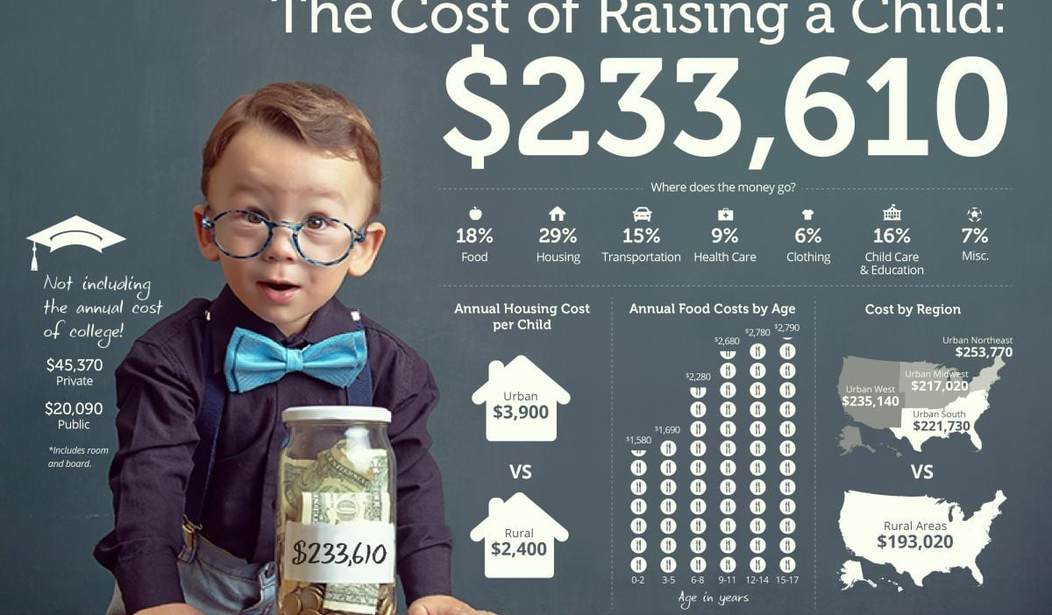What can you buy with $233,000?
- A hefty down payment on a house
- A Lamborghini
- 3,883 Hatchimals
- Charter a yacht for 4 weeks with 7 of your closest friends
- Tickets to the movies 27,061 times
- A child
Ok, let me qualify that last one. The United States Department of Agriculture (USDA) just released its annual Expenditures on Children by Families report (better known as “The Cost of Raising a Child” report.) According to its findings, the cost of a raising a child born in 2015 (through the age of 17) is $233,610!
While the amount necessary for raising children does vary by region, in the end, it is still pretty expensive. Children of lower-income families are expected to cost closer to $174,690, while those in higher-income households will probably come in around $372,210. Also, ever heard the term “cheaper by the dozen”? That apparently goes for kids too. The more children you have, the less expensive each one gets, thanks to the probable sharing of toys, clothes, and bedrooms. According to the report, “[a]s a result, compared to a child in a two-child family, families with one child spend 27 percent more on the only child and families with three or more children spend 24 percent less on each child.”
Beyond raising the blood pressure of any parent who reads it, the informative annual report actually serves a purpose:
As the economy continues to improve, USDA is committed to supporting the nutrition and health of individuals and families through our research and programs,” said Kevin Concannon, Under Secretary for Food, Nutrition and Consumer Services. “This report, which we have produced for 55 years, gives families a greater awareness of the expenses they are likely to face, and serves as a valuable tool for financial planning and educational programs, as well as courts and state governments.”“Understanding the costs of raising children and planning for anticipated and unexpected lifeevents is an important part of securing financial health.
But while housing costs have increased over time, changes in American agriculture have resulted in lower food costs, and family food budgets now represent a lower percentage of household income. For families who wish to lower their food costs even more, we offer a variety of resources at ChooseMyPlate.gov/budget.Across the country, costs were highest in the urban Northeast, urban West, and urban South;while lowest in the urban Midwest and rural areas. Much of the regional variation in expenses was related to housing. Differences in child care and education expenses also contributed to regional variation. Overall, child-rearing expenses in rural areas were 24 percent lower than those in the region with the highest expenses, the urban Northeast.

Image via USDA.gov









Join the conversation as a VIP Member